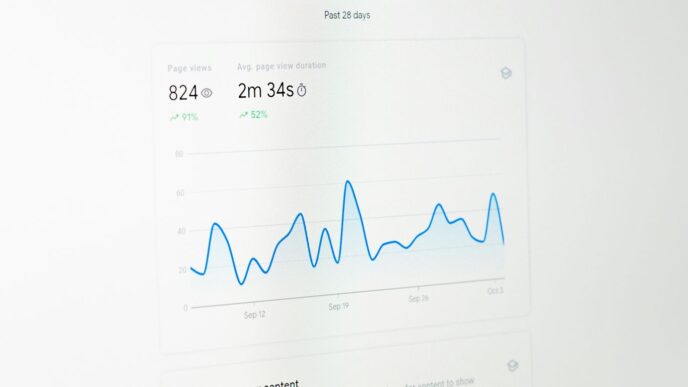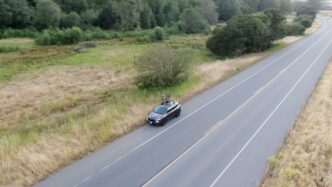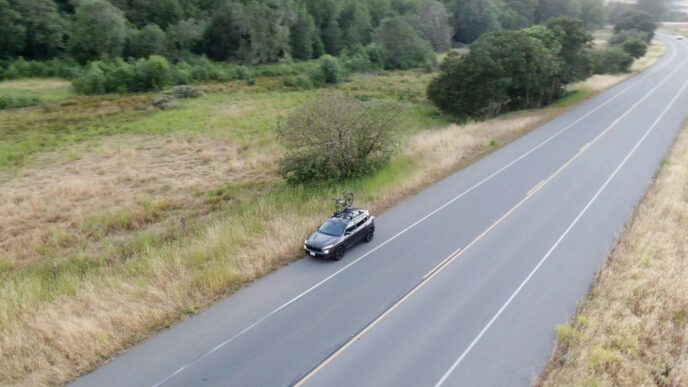Key Autonomous Trucking Innovations
The world of autonomous trucking is really moving forward, and a lot of that has to do with some pretty cool tech upgrades. It’s not just about slapping some sensors on a truck; it’s a whole system working together.
Advancements in Sensor Technology and AI Perception
Think of sensors as the eyes and ears of these trucks. We’re seeing a big leap here. Companies are putting together multiple types of sensors – like LiDAR, radar, and advanced cameras – and then using smart AI to make sense of all that data. This means the truck can "see" and understand its surroundings way better, even in tough weather like heavy rain or fog. It’s like giving the truck super-vision, allowing it to spot things far off, like a small animal or a stalled car, long before a human driver might. This multi-sensor approach is key to making sure these trucks can operate safely.
Next-Generation Computing and AI Model Training
All those sensors generate a ton of information. To handle it, trucks need serious computing power. We’re talking about specialized computers onboard that can process data in real-time. Plus, the AI models themselves are getting smarter. They’re trained on massive amounts of driving data, learning to make better decisions about everything from speed adjustments to avoiding obstacles. This training process is ongoing, meaning the trucks get better and safer the more they drive and learn.
Vehicle-to-Everything Communication Enhancements
This is a big one for coordination. Trucks are starting to "talk" to other vehicles (V2V), to the road infrastructure like traffic lights (V2I), and even to pedestrians or cyclists (V2P). Imagine a truck getting a heads-up from a car ahead about sudden braking, or from a traffic signal about when it’s going to turn green. This communication helps trucks anticipate what’s happening around them, reducing the need for sudden maneuvers and making traffic flow smoother and safer for everyone on the road.
Leading Companies in Autonomous Truck News
Tesla’s Semi and Autopilot Systems
Tesla’s Semi truck continues to be a hot topic, aiming to bring electric and autonomous capabilities to long-haul trucking. While full Level 4 autonomy isn’t here yet for the Semi, Tesla’s Autopilot and Full Self-Driving (FSD) systems are already being tested and refined. The company’s approach focuses on integrating advanced driver-assistance features that could eventually pave the way for more autonomous operations. The big promise is a significant reduction in operating costs and emissions for trucking fleets.
Waymo Via’s Logistics Solutions
Waymo Via, the trucking division of Waymo (Google’s self-driving car company), is making strides in the logistics space. They’ve been focused on developing and deploying autonomous trucks for commercial freight. Waymo Via is working with various partners to integrate its technology into existing logistics networks. Their strategy involves testing and validating the technology on public roads, gathering data, and preparing for wider commercial use. They’re looking at how to make freight movement more efficient and reliable.
TuSimple’s Autonomous Freight Milestones
TuSimple has been a significant player, focusing specifically on autonomous driving technology for heavy-duty trucks. They’ve achieved several milestones in testing and development, aiming for a driverless system for long-haul routes. The company has been working on building out its operational design domain and testing its trucks in various conditions. Their goal is to create a safe and efficient autonomous freight network.
Plus and Embark Trucks’ Level 4 Specialization
Companies like Plus and Embark Trucks are concentrating on achieving Level 4 autonomy, which means the trucks can handle all driving tasks under specific conditions without human intervention.
- Plus has been developing its SuperDrive system, working with major truck manufacturers and logistics companies. They’ve focused on commercializing their technology for highway driving, aiming to address the driver shortage and improve efficiency.
- Embark Trucks has also been a notable name, focusing on developing autonomous driving systems for commercial trucks. They’ve emphasized partnerships and testing to validate their technology for real-world freight operations.
Both companies are pushing the boundaries of what’s possible with autonomous technology in the trucking industry, with a clear eye on practical, commercial applications.
Sustainable Powertrain Developments
Battery Technology for Long-Haul Trucks
Big trucks need a lot of power, and figuring out how to get that power without burning fossil fuels is a huge puzzle the industry is trying to solve. Battery tech is getting better, though. We’re seeing new lithium-ion batteries that can hold more juice, meaning trucks can go further on a single charge. For example, some companies are talking about batteries that could get a truck up to 600 miles before needing a plug-in. That’s a pretty big jump from where we were just a couple of years ago. The challenge now is making these batteries big enough and fast enough to charge for the demands of long-haul trucking. It’s not just about the range, but also about how quickly you can get back on the road after a stop.
Hydrogen Fuel Cell Advancements
Hydrogen is another big player in the clean energy truck game. The idea is that these trucks run on hydrogen, and the only thing they really put out is water vapor. Companies are making strides with fuel cell technology, which is what converts the hydrogen into electricity to power the truck. Some of these new hydrogen trucks are boasting ranges that are even longer than the battery-electric ones, sometimes up to 900 miles on a full tank. The main hurdle here is building out the refueling stations. You can’t just pull into any old gas station for hydrogen yet. Shell, for instance, is working on expanding its network, which is a good sign for making hydrogen trucks more practical.
Hybrid Dual-Energy Systems
Why pick just one power source when you can have two? That’s the thinking behind hybrid dual-energy systems. These setups combine batteries with hydrogen fuel cells. The idea is to use the best of both worlds. Maybe the batteries are good for shorter bursts of power or flatter terrain, while the hydrogen fuel cells handle the long stretches or uphill climbs. Hyundai has shown off a system like this, aiming to get the most efficiency out of the truck no matter what the road or distance throws at it. It’s a more complex system, for sure, but it could offer a flexible way to tackle different hauling needs while keeping emissions down.
Regulatory Landscape and Legal Challenges
Fragmented Legal Frameworks in the US
The road to widespread autonomous trucking in the U.S. is a bit of a maze right now, legally speaking. Different states have their own ideas about how these trucks should operate, and that makes it tough for companies wanting to run their services across the country. We’ve seen some pilot programs get held up because of disagreements over safety rules, like that situation in California. It’s like trying to follow a recipe where every chef has a different version of the instructions.
Federal Guidelines and State Opposition
There have been attempts to create some national standards. The Federal Motor Carrier Safety Administration has put out some draft guidelines, trying to get everyone on the same page for highway driving. But, it’s not a done deal. Some states aren’t exactly thrilled, and groups like labor unions are worried about jobs. It’s a balancing act, for sure, trying to push innovation while addressing real concerns from people on the ground.
Liability Disputes in Autonomous Accidents
And then there’s the big question: who’s responsible when something goes wrong? Accidents involving autonomous trucks are starting to pop up, and figuring out liability is a whole new legal battle. We’ve seen lawsuits filed in places like Illinois and Florida that are really testing the waters of our current laws. It’s a complex issue, and the outcomes of these cases will likely shape how autonomous trucking is regulated and insured moving forward.
The Future of Autonomous Freight Transport
So, where is all this heading? It’s pretty clear that self-driving trucks aren’t just a sci-fi dream anymore. We’re looking at a future where freight moves around the clock, with fewer delays and, hopefully, fewer accidents. The big picture is about making the whole process of moving goods much smarter and more efficient.
Towards Full Autonomy and Seamless Logistics
We’re inching closer to trucks that can handle pretty much any road situation without a human behind the wheel. Think Level 5 autonomy – that’s the ultimate goal, where the truck can drive itself anywhere, anytime. This means logistics networks could run 24/7, making deliveries faster and more predictable. It’s not just about the trucks themselves, though. It’s about how they fit into the bigger picture of getting stuff from point A to point B.
Integration with Smart Infrastructure
Imagine trucks talking to the road, to traffic lights, and even to the loading docks. That’s the idea behind smart infrastructure. Autonomous trucks will be able to communicate with things like smart highways that can give them real-time traffic updates or adjust speed limits. Automated loading docks will be able to load and unload trucks without anyone needing to be there. This kind of connected system is what will really make autonomous freight work smoothly.
The Role of Government and Industry Collaboration
All this cool tech won’t just magically appear and work perfectly. We need rules and standards. Governments and the companies building these trucks and running the logistics have to work together. They need to figure out safety rules, how to handle accidents if they happen, and what all this means for the people who drive trucks now. It’s a big job, but getting everyone on the same page is key to making sure autonomous freight becomes a safe and reliable part of our lives.
Wrapping It Up
So, what’s the takeaway from all this? It’s pretty clear that self-driving trucks are no longer just a sci-fi dream. We’ve seen some really cool tech pop up, like better sensors and smarter AI, making these trucks more capable than ever. Plus, the push for electric and hydrogen power means the future of hauling goods could be a lot cleaner. Of course, it’s not all smooth sailing. There are still some tricky legal questions and worries about jobs that need sorting out. But honestly, the progress is undeniable. Companies are testing, rules are slowly catching up, and it feels like we’re on the edge of a big change in how things get moved around. Keep an eye on this space, because the road ahead for autonomous trucking looks pretty busy.












